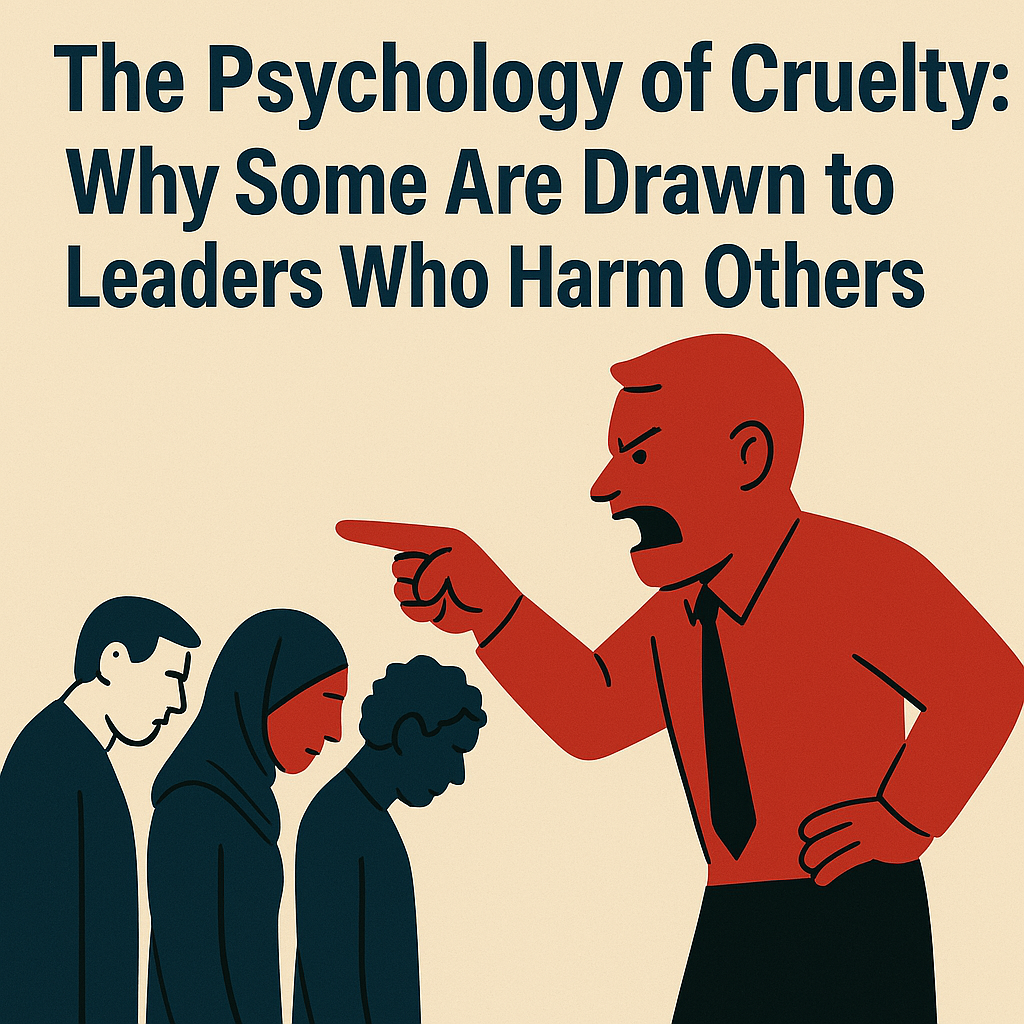 The Psychology of Cruelty: Why Some Are Drawn to Leaders Who Harm Others
The Psychology of Cruelty: Why Some Are Drawn to Leaders Who Harm Others
By Dr. Mark Smutny, President of Civic Reinventions, Inc.
Cruelty is not merely an individual failing—it is often a systemic force that leaders can manipulate for power. Across history, authoritarian figures have risen by dehumanizing certain groups, reinforcing divisions, and exploiting fear. But why are some people drawn to such leaders? And what psychological forces lead individuals to exhibit cruelty and abuse toward others who are different?
The Appeal of Cruel Leaders
At first glance, it seems counterintuitive that people would embrace leadership built on harm. Yet history shows a pattern: leaders who marginalize and scapegoat can mobilize large groups by tapping into underlying emotions—fear, resentment, and a desire for control.
Several psychological forces explain why people are drawn to cruel leadership:
- Fear and Uncertainty: In times of economic distress, political instability, or cultural change, fear heightens. Some find comfort in leaders who claim to “restore order” by identifying an enemy—whether racial, ethnic, religious, or ideological.
- Group Identity and Tribalism: Humans are wired for belonging. Leaders who emphasize “us vs. them” can make followers feel part of a righteous cause while justifying hostility toward outsiders.
- Projection of Personal Insecurities: Some individuals—feeling powerless, overlooked, or disrespected—channel their frustrations onto marginalized groups, encouraged by leaders who validate their anger.
- Desensitization to Cruelty: When cruelty becomes normalized, empathy erodes. Over time, people who once felt uneasy about aggression may come to accept or even participate in harmful actions.
The Psychological Roots of Cruelty
Cruel individuals often exhibit characteristics shaped by psychological and social conditions. Some key factors include:
- Lack of Empathy: Cruelty thrives when people fail to recognize the humanity in others. Empathy is shaped by childhood experiences, social conditioning, and neurological factors. When diminished, it creates emotional distance that enables harm.
- Narcissism and Power-Seeking Behavior: Some individuals, particularly in leadership, crave dominance. They may manipulate others, devalue opponents, and reject accountability, fueling toxic environments.
- Authoritarian Personality Traits: Certain personalities are drawn to rigid hierarchies and control. They may believe that strength is demonstrated through domination, not cooperation.
- Early Trauma and Learned Behavior: People raised in environments of aggression or neglect may internalize cruelty as a form of survival or control. Without intervention, these behaviors can become ingrained.
Toward a Different Model of Leadership
Hope lies in cultivating leaders who prioritize empathy, inclusion, and resilience. Societies can resist cruelty by fostering education, building strong institutions, and encouraging moral courage. Leadership rooted in dignity and mutual respect offers a path forward, where differences are celebrated rather than weaponized.
The challenge is ours: to recognize cruelty when it emerges, confront its roots, and advocate for leadership that uplifts rather than oppresses.
